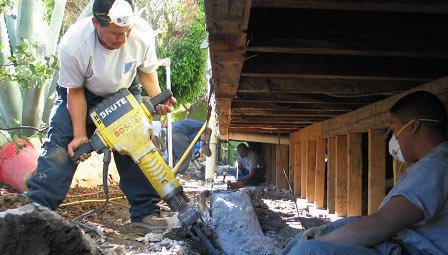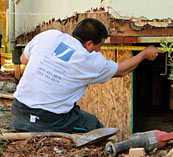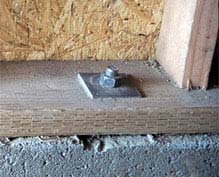Foundation Faults Must Receive Foundation Inspection Construction Company States
LOS ANGELES, CA: Julian Construction, (http://julianconstruction.com/), a foundation construction and foundation repair company in Southern California, is issuing a warning to homeowners to be on the watch for signs of foundation damage. Chief Safety Inspector for the company, Shawn Kyles, has issued a brief outline of what to watch for to tell if your home has foundation damage. Depending on how soon the damage is detected will determine whether foundation repair is required or if full foundation replacement is warranted.

Shawn Kyles stated: “Fully understanding the cause of your foundation problem is the first step in the replacement process. There are many reasons why foundations fail. Bad design, poor soil conditions and moisture issues are some of the more common causes of foundation instability and collapse.”
Shawn Kyles full report can be seen here: http://julianconstruction.typepad.com/julian-construction-blog/2013/03/replacing-a-foundation.html
Julian De La Torre, founder and owner of Julian Construction, stated: “We’ve seen many homes with foundation problems over the years. What’s very common is that the serious projects that have required us to completely replace a foundation always have warning signs that were ignored. The homeowner just did not know what to look for, and so the condition became worse. This can be stopped early and handled without completely replacing a foundation if the homeowner gets an inspection and follows the advice of the inspector on whether foundation repair is needed or not. Resolving this is crucial to the safety of everyone in the home.”
Julian Construction owns its own company and is built on a “no middlemen” model – no salesmen, no subcontractors. When you work with Julian Construction you get the principals of the company and workers of Julian Construction under your home. The result is the highest quality work at affordable prices. They can be contacted by phone at 323 733-3377, by fax at 323 733-4477 or via their website, www.julianconstruction.com. You can see tips and advice about home foundations on their blog, at http://julianconstruction.com/blog/ .
 Julian Construction’s chief building inspector, Shawn Kyles, stated: “Replacing a foundation is a worst-case scenario when it comes to foundation damage. Regular home inspections will often uncover foundation problems before they become serious. Correcting these issues early-on can save you the time and expense of a full foundation replacement. If you have any concerns about your current foundation, contact a knowledgeable
Julian Construction’s chief building inspector, Shawn Kyles, stated: “Replacing a foundation is a worst-case scenario when it comes to foundation damage. Regular home inspections will often uncover foundation problems before they become serious. Correcting these issues early-on can save you the time and expense of a full foundation replacement. If you have any concerns about your current foundation, contact a knowledgeable 